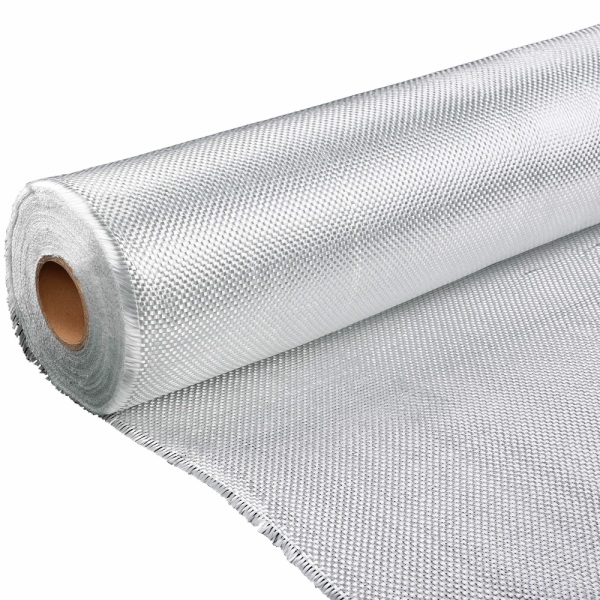Fiberglass fabrics are the workhorses of modern composites, offering an unbeatable combination of strength, lightweight performance, and chemical resistance.
Whether you’re reinforcing a boat hull, insulating an industrial oven, or building a high-performance car panel, choosing the right fiberglass fabric is key to success.
This guide dives into the six most customer-focused topics, helping you make informed decisions and optimize both performance and cost.

What are the Main Fiberglass Fabric Types?
Fiberglass fabrics are woven from fine glass filaments into a variety of weaves and weights.
The three primary categories are:
-
Woven Roving: Heavy, unidirectional fibers bound by a light stitch—ideal for high-strength laminates.
-
Chopped Strand Mat (CSM): Randomly oriented chopped filaments held together by a binder—perfect for hand lay-up and spray applications.
-
Woven Cloth (Plain, Twill, Harness): Balanced weaves that offer predictable drape and strength in two directions.
Each type has unique mechanical properties. Woven roving delivers maximum tensile strength, CSM provides rapid build-up and good impact resistance, and woven cloths strike a balance of drapeability and dimensional stability.
Knowing the basics helps you match fabric to application quickly.
Different Weave Organizations

The weave pattern in fiberglass cloth drastically influences stiffness, conformability, and resin flow:
-
Plain Weave: Each weft yarn alternates over/under each warp yarn, creating a tight, stable fabric. It resists distortion during lay-up, but has the lowest drape. Use it for flat panels and simple curves.
-
Twill Weave: Characterized by a diagonal “twill” pattern (2-over, 2-under), twill offers better drape than plain weave and smoother resin flow. It’s often chosen for moderate-complexity shapes like boat hulls and automotive panels.
-
Harness (Satin) Weave: With long floats (e.g., 4-over, 1-under), harness weaves provide the best drape over complex molds, minimal crimp, and a smooth surface finish—ideal for high-end composites and intricate tooling.
Selecting the right weave ensures strong fiber alignment, adequate resin penetration, and efficient fabrication.
Which Fabric is Best for Your Application?
Matching fabric to use-case optimizes performance and cost:
-
Marine & Boat Building: Twill weave cloth (200–300 g/m²) layered over woven roving base gives an excellent strength-to-weight ratio and corrosion resistance.
-
Automotive & Motorsport: Harness weave satin cloth delivers superior drape for complex aerodynamic shapes and a Class A finish.
-
Industrial Insulation: High-temperature fabrics (E-glass, C-glass) in plain weave form the backbone of heat blankets and gaskets, offering thermal stability up to 550 °C.
-
General Repair & Maintenance: Chopped strand mat simplifies hand lay-up repairs on pipelines, tanks, and structural elements—no complex lay-up technique required.
Assess mechanical load, chemical exposure, surface finish, and budget to determine the optimal fabric type.
Price vs. Performance
Fiberglass fabrics range from economical CSM (≈ $2–4/m²) to premium satin weaves (≈ $10–15/m²).
Key considerations:
-
Budget Constraints: Chopped strand mat and plain weave cloth cover most basic reinforcement needs at low cost.
-
Performance Demands: Twill and harness weaves cost more but reduce lay-up labor, waste, and finishing time. Their improved drape can cut cycle times by up to 20%.
-
Lifecycle Costs: Higher-grade fabrics often extend part life and reduce maintenance. For structural or high-temperature uses, the initial premium pays dividends through durability.
Strike a balance: use premium weaves only where shape complexity or finish dictates, and lean on cost-effective fabrics for less demanding layers or backing.
Easy Tips for Handling & Storage
Proper handling and storage preserve fabric integrity and simplify lay-up:
-
Keep Dry & Clean: Store rolls in a cool, dry environment (≤ 60% RH) to prevent mildew and fiber degradation.
-
Avoid Sharp Bends: Handle rolls gently—excessive flexing can create fiber breaks and resin-rich spots.
-
Use Protective Covers: Keep dust, grease, and UV light off fabrics; contamination leads to poor bond and surface defects.
-
Rotate Stock: “First in, first out” prevents older rolls from absorbing moisture or yellowing over time.
Following these simple practices reduces fabrication headaches, ensures consistent resin uptake, and maximizes material value.
Safety Precautions When Working with Fiberglass
Fiberglass handling carries health considerations—observe these safety measures:
-
Protective Clothing: Wear long sleeves, gloves, and a dust-resistant respirator (P2/N95) to block skin irritation and inhalation of fine glass dust.
-
Ventilation: Work in a well-ventilated area or use local exhaust to clear styrene and other volatile organic compounds (VOCs) from resins.
-
Clean-Up Protocol: Use a HEPA-filtered vacuum or wet wiping to collect dust; avoid compressed air which disperses fibers.
-
First Aid: If fibers contact skin, wash with cold water and a mild soap. Seek medical attention for persistent irritation or eye exposure.
Prioritizing safety not only protects health but also supports higher-quality workmanship and compliance with workplace regulations.
Conclusion
Choosing the right fiberglass fabric type involves balancing mechanical requirements, shape complexity, cost constraints, and handling practices.
By understanding the main categories, weave effects, application best-fits, and safety essentials outlined above, you’ll achieve stronger, lighter, and more durable composite parts—every time.


